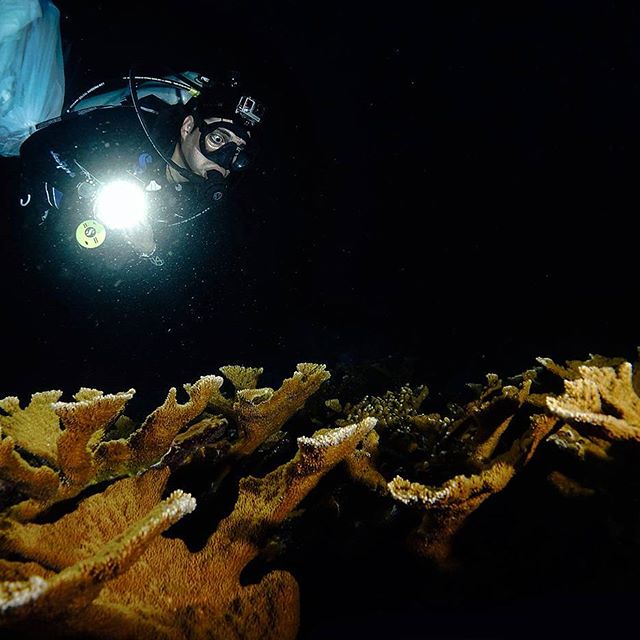
HITTING THE TARGET
Diving artificial reefs in current can create added challenges. As opposed to a typical drift dive, where the location that divers meet the reef is less important, landing on a wreck in a swift flow can be tricky. Thankfully, experienced operators such as Dawson, whose backyard in Key Largo is home to some of the world’s largest wrecks, have the technique wired.
“One of the biggest challenges is at the surface,” Dawson says. “We use a tagline that leads all the way down to the wreck, but a pretty common mistake is that divers let go of the rope after they giant-stride or back-roll in.”
Utilizing line systems in a current to maintain your position in the water column and your connection to the dive boat can increase your security and confidence. But care should be used when using lines that might be encrusted with sharp barnacles or errant fish hooks. “The best thing to do is to hold on with both hands, alternate your movement hand over hand, tuck your head in, and hang on,” Dawson says.
Once on the wreck, the master instructor trainer advises his guests to use the wreck as shelter. “Get on the leeward side of the flow, and typically you won’t feel it and can do a reasonably comfortable dive even in a strong current,” he explains.
Planning and understanding what you’re going to deal with underwater are paramount, according to Dawson. “Swimming into the current at the beginning of the dive and floating back with the current at the end of the dive is going to benefit you,” he says. And be reasonable about your experience and skill level before you plunge. “Listen to the advice of the professionals who do it every day,” advises Dawson. “If the crew is giving you a warning about the current, heed that warning, and think twice before you say you can handle it and get in the water.”
SHOOTING THE BREEZE
Underwater photographers operating in current must work harder to maintain the proper trim and position that will ensure attractive composition and sharp focus. Seasoned pros such as Wray have perfected techniques to get the shot.
“Good buoyancy alone will not keep you stable in the water column,” says Wray, who frequents the current-swept reefs of South Florida. “You might need to fin harder to stay in one place, find an outcropping to hide behind, or carefully use a reef hook.”
One common mistake is failing to create a more conservative plan. “You will be using a lot more air when working to stay stable,” she explains. “Look for shots that allow you to face into the current, where you can gently fin to keep your position. If you have to turn your back to the current to get the shot, chances are you’ll blow right into or over your subject and obviously miss the photo op.”
To compensate, Wray advises to hone your buoyancy skills and streamline your kit. “Keep your gear as low-profile as you can manage to avoid drag, and use a sturdy lanyard on your camera, either tethered to your BC or over your arm, for extra peace of mind,” she says.
Copyright 2019-2024 www.nitesunlight.com
Address: 7F, Building 6, Yusheng Industrial park, Gushu, Bao' an District, Shenzhen, Guangdong 518102,China
Tel: +86 15815571541 E-mail:info@nitesunlight.com